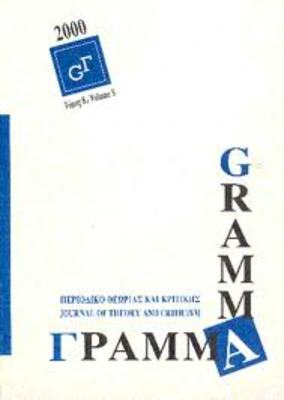Plotting against America : 9/11 and the spectacle of terror in contemporary American fiction
Part of : Γράμμα : περιοδικό θεωρίας και κριτικής ; Vol.16, No.1, 2008, pages 293-312
Issue:
Pages:
293-312
Section Title:
Fiction writing after 9/11
Author:
Abstract:
This article examines the literary preoccupation with the visual image and the seeming impossibility of realism in the wake of the September 11th terrorist attacks. Tracing a series of long and short pieces from a selection of authors, this piece examines how writers were quick to register a series of written responses to the events. Beginning with immediate subjective pieces from writers such as Paul Auster, Martin Amis, and Erica Jong, this essay analyses these writers' emphasis on the visual nature of the attacks, from the omnipresence of the television reports to the eyewitness testimony offered by many. It then moves on to concentrate on some of the short stories from Ulrich Baer's edited volume 110 Stories: New York Writes after 9/Π (2002). Focusing on pieces such as Avital Ronell's "This Was a Test" and A.M. Homes's "We All Saw It, or The View From Home," the author identifies a brooding melancholy over the limits of language as a communicative or affective tool. This is then taken up in a longer concentration on Don DeLillo's Falling Man (2007) and Jonathan Safran Foer's Extremely Loud and Incredibly Close (2005), both of which emphasise the visual—the latter to the extent of melding the visual with the written in his account of traumatic loss. Using the theoretical apparatuses of Slavoj Zizek and Jean Baudrillard, the author makes the case that all of these writers, to varying degrees, are self-consciously operating in a textual landscape in which the boundaries of literary realism have been altered. According to DeLillo, the real is now "unreal" or "too real" to be portrayed by straightforward realist narratives. Thus, these writers integrate an emphasis on the visual image within their fictions (performance art in the case of DeLillo and actual photographs interspliced with the text in Foer's novel), thereby offering a heightened version of realism in order to accurately portray the realities of post 9/11 socio-cultural and personal landscapes.
Subject:
Subject (LC):
Notes:
Revisiting crisis / reflecting on conflict: American literary interpretations from World War II to Ground Zero.Περιέχει βιβλιογραφία




